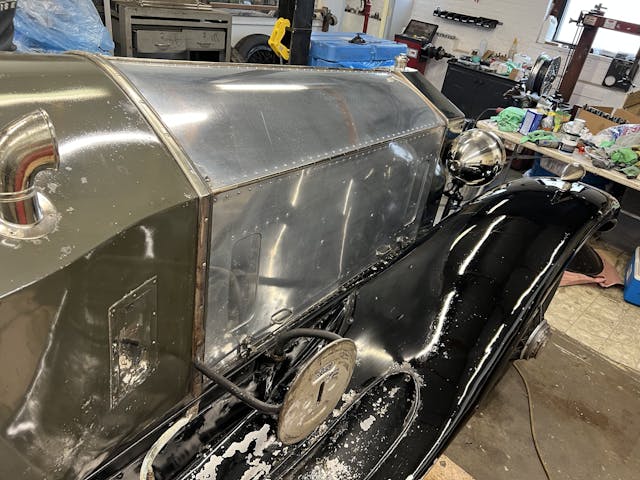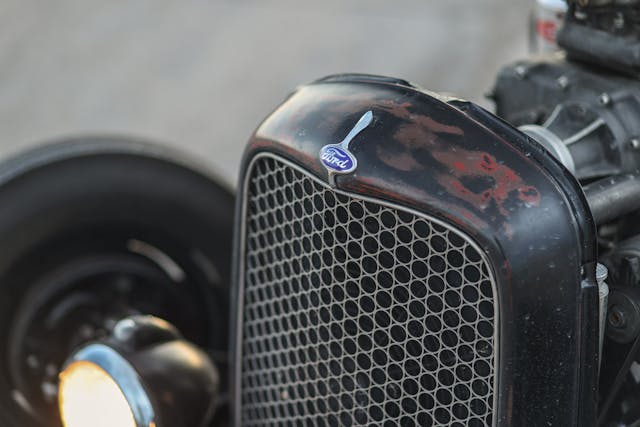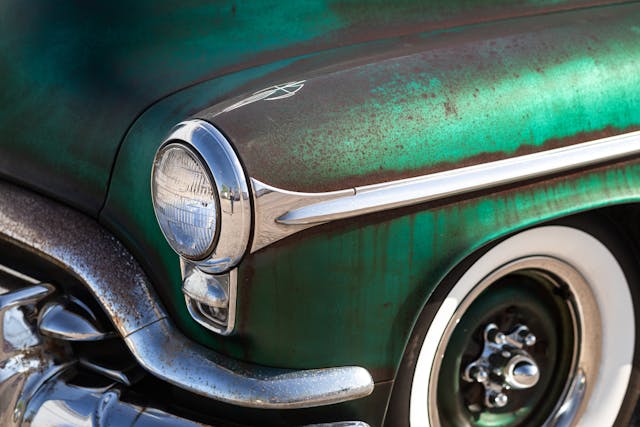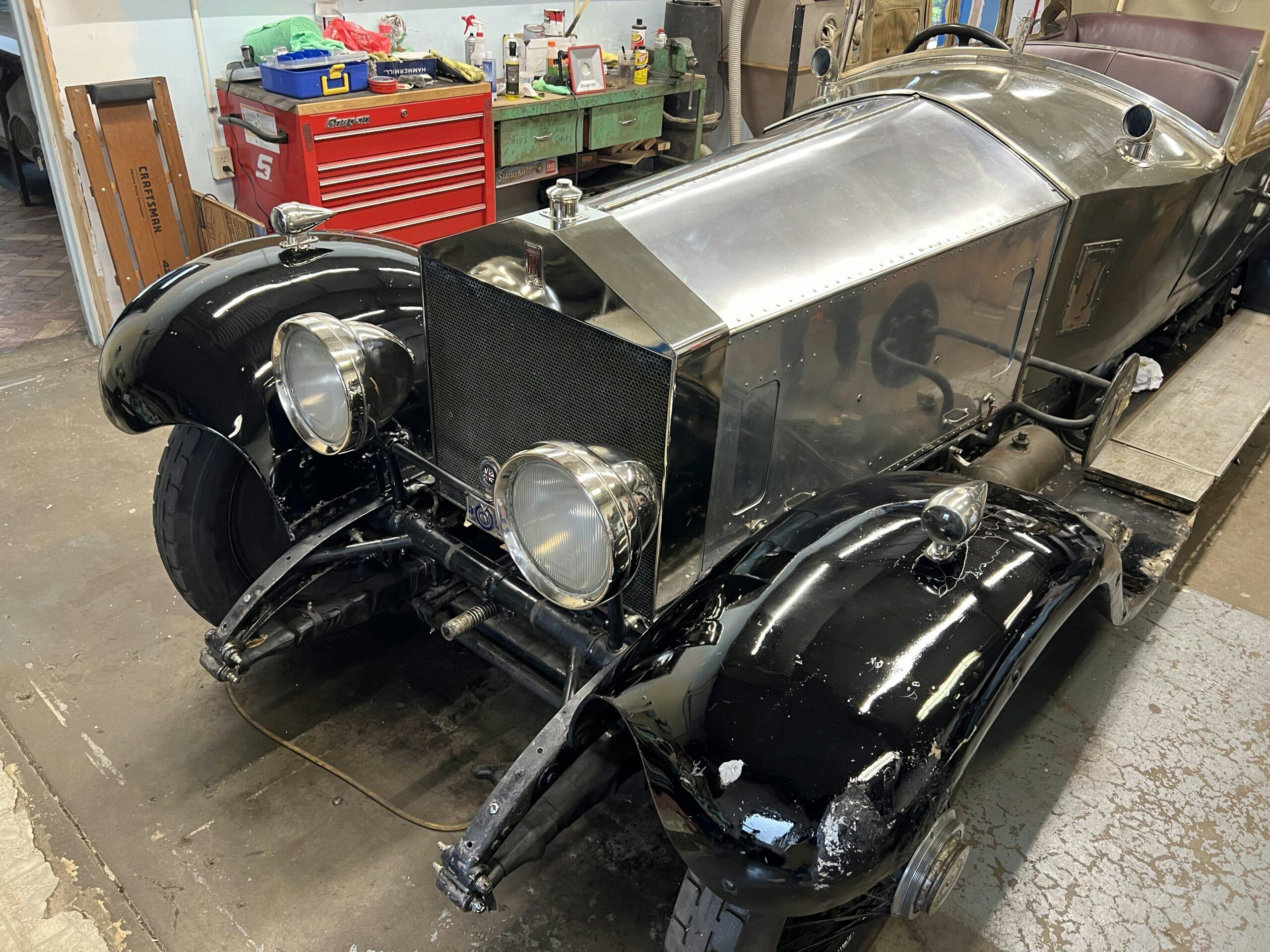A professional’s perspective on cultivating patina
When we drive our cars, they collect signs of that use—patina, in collector-car speak. The latest issue of Hagerty Drivers Club magazine explores the delight found in such imperfect cars. To get all this wonder sent to your home, sign up for the club at this link. To read about everything patina online, click here.
When it comes to automotive preservation, Tim McNair is one of the best to practice the art. With more than 45 years in the business and 18 years at his company, Grand Prix Concours Preparation, few are better able than McNair to speak on the topic. When we connect with McNair, he’s in the process, fittingly, of preserving a 1924 Rolls-Royce Silver Ghost. It’s one of two cars McNair is preparing for Pebble Beach’s preservation class in 2023.
McNair’s first lesson for owners who want to preserve the patina of their concours-bound vehicle? Leave the job to an expert. “I can probably undo whatever they do if they really want to work on the car, but it’s easier if I get involved from the beginning.” McNair begins his process by first determining the owner’s goals for the car. “If the goal is to drive it, as in the case of this Rolls-Royce, the mechanicals are done,” he explains. “The engine won’t be rebuilt unless it’s completely spent, but it will get fresh fluids, the radiator will be cleaned, whatever it needs to make it drivable. Any kind of rubber, just consider that it’s gone and replace it. And of course, new tires.”
The dirty, robust components such as the undercarriage, suspension, and engine receive attention first, so that the detritus isn’t blown all over the rest of the car. “In the case of the Rolls, when I first saw it, it was absolutely filthy. The suspension had so much muck on it that we were literally scraping it with chisels and scrapers,” he explains. “Now we can see the nuts and bolts. Most important, we can see the grease fittings, so we can pump in fresh grease and get all the old crap out. Again, I’m not detailing. I’m cleaning. It’s an important distinction.”

Another technique McNair will employ as the situation warrants: dry-ice blasting. A device that looks like a pressure washer uses rice-sized pellets of carbon dioxide to spray parts to remove stubborn grime. When the spray hits the substrate, it removes the dirt and leaves behind a fine haze that easily wipes off. “I used dry-ice blasting on the Rolls because there was so much hard, caked-on gunk. When to use it is really a case-by-case situation.”
Once the grubby bits are clean, McNair turns to the delicate painted surfaces. “This might sound crazy, but I never wash the old cars I’m working on. Because of their vintage, I can’t put a hose on them because they’ll fill with water,” he confesses. “Instead, I’ll use quick detailers to clean the car and remove all the dirt and dust and funk.” At some point in the car’s past, someone had applied some kind of glaze to the paint to preserve it. “It might have been linseed oil,” he says. “There were streaks everywhere that I’ve tried to minimize.” The fenders were painted with a black lacquer, McNair estimates sometime back in the 1950s or 1960s. “They’re dented up and scratched and ugly as hell, but with a little bit of polish and a little bit of compound, I got them back up to a very, very shiny status. It’s pretty cool.”

With the paint cleaned, McNair turns his attention to preserving it. “That’s really the biggest thing that needs to be preserved, because generally with cars of this age, the paint comes off in big chips and flies away in a hurry. There are many different methods of sealing it. In fact, Eastwood made a product called Patina Preserver, which is a clear matte paint.” McNair uses a very targeted approach to preserving the paint. “I’m being very sympathetic. I’m not spraying large patches. If there’s a big chunk of paint that’s maybe an inch by an inch, I’ll use an airbrush to dust in a little color to give it a better uniform appearance. The essential concept to keep in mind is that we’re doing this for corrosion protection. It has nothing to do with aesthetics. It’s done for the preservation of the car.”
McNair is quick to point out what patina is and what it is not. “The difference between a preservation car and a car that should be restored is neglect,” he explains. “Some people take these cars out of barns and they have not been driven in 50 years, and they’ve been neglected. At some point, if you want to use the car again, whether you want to drive on tours or have it in your collection, you have to address neglect to bring the car back, either to a stage where it was at one time or just preserving the car through the years.”
Then there’s the phenomenon of “fake” patina. “I was working on an unrestored Ferrari, and the owner wanted to drive it on tours,” McNair recalls. “The suspension had to be completely rebuilt, but when we got back the springs and shocks from Koni, they were brand new and shiny and clean. To make them look authentic, I weathered the shock bodies to make them look older and dipped the springs in muriatic acid to promote a little light rust. When we put everything back together, it looked like it belonged in the car the whole time.”

Where did McNair learn these skills? “Easy,” he answers. “The rat-rod guys. I learned how to do these rusting and weathering processes from the guys who are faking patina on their hot rods, and they do it the best. So, why not? Also, from years of building military and other models, I learned the weathering process, tricks like that.”
With all of these patinaed cars—authentic and not—out there, how is a prospective buyer able to tell the difference? McNair’s answer might sound familiar: “Hire an expert. It’s part of due diligence. You’re spending a lot of money. Hire a restorer, someone who knows the process.” McNair uses vintage audio as an analogy. “I compare these cars to tube amplifiers. You know the difference, the audible difference, that tubes give, that warmth, right? That’s what a preservation car is. It’s warm, fuzzy, and it’s a blanket. It’s your favorite pair of socks.”
***
Check out the Hagerty Media homepage so you don’t miss a single story, or better yet, bookmark it. To get our best stories delivered right to your inbox, subscribe to our newsletters.





I don’t want holes in my favorite pair of socks…
Actually, what this guy is doing makes sense to me. He’s not trying to re-create the perfect car, and he’s not trying to create fake aging (except where it really makes some sense to do so, and then only minimally). He’s just trying to stop ‘metal cancer’ and other deterioration, make things useable, and preserve them.
I’ve said elsewhere that I’m fine with all stages of aesthetics for classics from total rust-bucket to Ridler winner – to each his own, and I can respect the thought and effort that goes into any type of build. I’m just happy to know that someone dug something out and made it useful again and put it out there where we can see and enjoy it.
This is not the Patina fad. This is old car preservation.
In these circles it is seen as a greater cause if you can preserve the original car vs restoration. their claim is it is only original once. Again not my thing but these are the cars used for reference if you were to restore back to original condition properly.
The other stuff is boarder line rat rod. More a trend than an art. It will run its course over time.
I’d rather have a car painted completely in that green color. It’s nice.